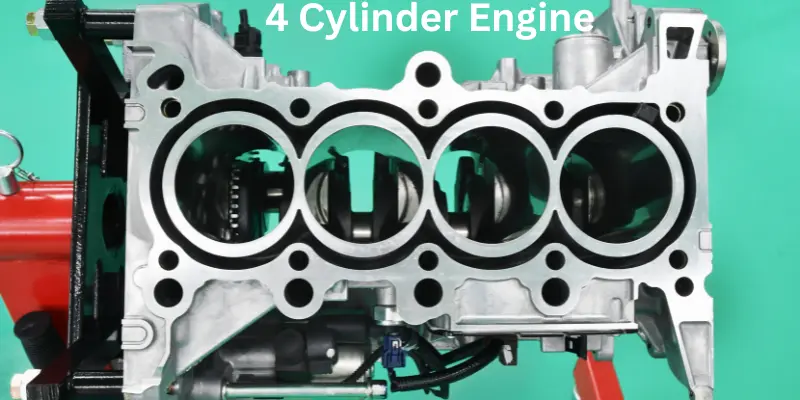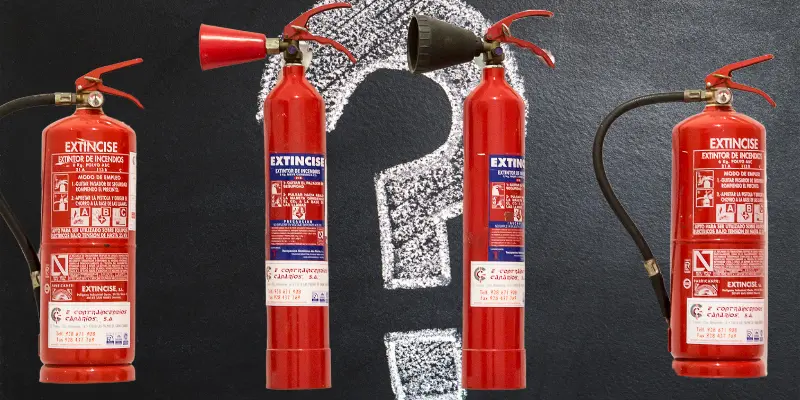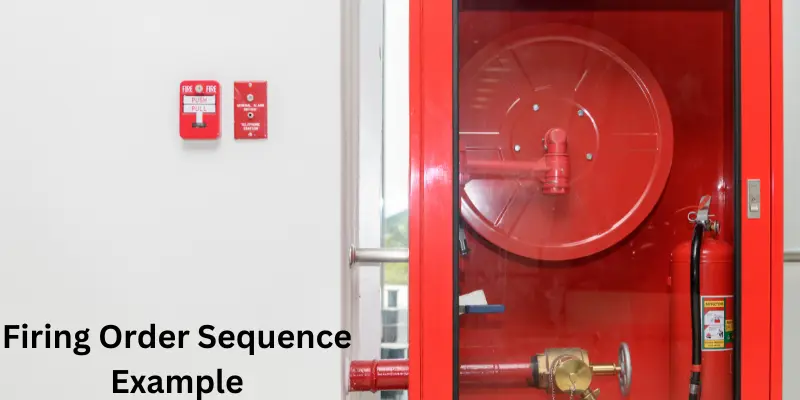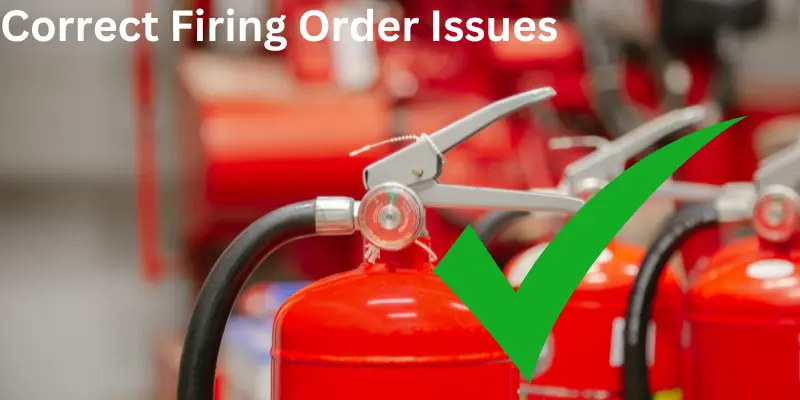Firing Order on 4 Cylinder Engine – Complete Guide
Updated: 21 Jan 2025
659
The firing order on 4 cylinder engine is the specific sequence in which the cylinders fire. This order plays a crucial role in ensuring the engine operates smoothly and efficiently. A correct firing order helps the engine produce power evenly and minimizes vibrations. If the firing order is incorrect, it can lead to misfires, poor performance, or even engine damage. Understanding the firing order is essential for maintaining engine health and fixing potential issues that may arise.
What Is Firing Order?
Firing order in an engine tells the order in which each cylinder produces power. In a 4 cylinder engine, this means the order in which each cylinder produces power during engine’s operation.
Firing order plays an important role in keeping the engine balanced and running smoothly. When the cylinders fire in the correct order, the engine works efficiently and power is delivered in a steady way. This helps prevent unnecessary vibrations and ensures the engine’s long-term health.

Firing order ensures that the engine operates smoothly, without misfires or irregular power delivery, leading to better performance and fuel efficiency.
You May Also Visit It
What Is Non-Ferrous Metals | Types | Pros And Cons – Complete Guide
What is Ferrous Metals – Types, Uses, Key – Complete Guide
Diagram of V8 Engine Explore the Power Behind Every Part
What is Cold Roll Steel: Types, Grades and Uses | Pros and Cons
Understanding a 4 Cylinder Engine
A 4-cylinder engine is a kind of engine with four cylinders placed in a row. Each cylinder contains a piston that moves up and down. When the engine runs, the pistons push and pull, turning the crankshaft to create power for the vehicle.
These engines are common in many types of vehicles, including cars, motorcycles, and small trucks. They are known for being efficient and compact, making them a popular choice for everyday vehicles. Because of their size and design, 4 cylinder engines are often used in cars that are built for daily driving, as well as in motorcycles and even some small boats.
The 4 cylinder engine is great because it gives a good mix of power and saves fuel, which is why it is commonly found in vehicles that need both good performance and low operating costs.
⚙️ The 4-Stroke Cycle
Every cylinder follows a simple 4-step cycle to make power. This cycle is called the 4-stroke cycle, and it has these steps:
- Intake: The cylinder pulls in air and fuel.
- Compression: It squeezes the air and fuel tightly.
- Power: A tiny spark lights the fuel, causing a small explosion. This pushes the piston down and creates power.
- Exhaust: The waste gases are pushed out of the cylinder.
Why Is the Firing Order Important?
The order in which the engine’s parts fire is really important for how well the engine works. It changes how the engine performs. If the firing order is wrong, the engine won’t run smoothly and might face issues.
A correct firing order helps the engine run smoothly by ensuring that each cylinder fires at the right time. This makes the engine less likely to shake or vibrate. If the firing order is not correct, it can cause unwanted vibrations, making the ride rough and uncomfortable.

The firing order also impacts fuel efficiency. When the engine is balanced and running smoothly, it uses fuel more efficiently. This means better mileage and less waste. A correct firing order helps the engine last longer, too. It reduces wear and tear on the engine parts, so they don’t get damaged too quickly.
How Firing Order Works on 4 Cylinder Engine
- Firing order determines the exact sequence in which each cylinder in a 4 cylinder engine fires.
- A 4 cylinder engine has four parts called cylinders, and each part works once during each full engine cycle.
- The firing order makes sure that power flows evenly from all the cylinders.
- In most 4 cylinder engines, the order in which the engine fires is 1-3-4-2. But this can change depending on how the engine is made.
- The sequence is designed to keep the engine balanced and reduce vibrations.
- Each cylinder fires at specific times to maintain the engine’s rhythm and efficiency.
- The firing order is carefully arranged to avoid putting too much pressure on any one part of the engine at the same time.
Common Firing Orders in 4 Cylinder Engines
- Firing order of 1-3-4-2 is very common in many 4-cylinder engines. You can often find this pattern in engines from popular brands like Ford and Honda.
- 1-2-4-3: Some 4 cylinder engines, especially in older models, use this firing order. It is seen in a variety of classic car engines.
- 2-4-1-3: A less common firing order, used in certain specific engine designs for improved balance.
Comparison of Firing Orders:
- Different car brands or engine designs use different firing orders depending on their engineering needs. For example, the firing order 1-3-4-2 is common in modern engines, while older engines may use 1-2-4-3.
- The firing order affects how the engine runs, its vibration levels, and how power is distributed.
These firing orders are important for engine balance and smooth operation. The most common firing order, 1-3-4-2, ensures that the engine runs efficiently, with steady power delivery and fewer vibrations.
Firing Order Sequence Example
- A typical firing order for a 4-cylinder engine is 1-3-4-2. This means that the engine fires the cylinders in this specific order to make it run smoothly.
- Cylinder 1 fires first.
- Then cylinder 3 fires.
- After that, cylinder 4 fires.
- Finally, cylinder 2 fires.

- Practical Implications:
- Engine Repair: If the engine’s firing order is wrong, the engine may not run properly. This can make the car shake, reduce its speed, or even hurt the engine.
- Engine Tuning: Correct firing order ensures smooth power delivery, which is essential for optimal performance and fuel efficiency.
- Diagnosing Issues: When tuning or fixing an engine, knowing the correct firing order helps mechanics identify any issues quickly and fix them.
Impact of Incorrect Firing Order
An incorrect firing order in a 4 cylinder engine can cause several issues, including:
- Misfiring: The engine may misfire, meaning it will fail to fire at the right time. This can cause a lack of power and poor performance.
- Rough Idling: When the firing order is wrong, the engine may shake or idle roughly, making it uncomfortable for the driver.
- Engine Vibration: Incorrect firing order can cause the engine to vibrate more than usual, leading to excessive wear and tear.
- Decreased Fuel Efficiency: An incorrect firing order can waste fuel, as the engine may not burn fuel as efficiently as it should.
- Overheating: If the firing order is not correct, it can cause certain cylinders to overheat, potentially damaging the engine.
Incorrect firing order can seriously affect the engine’s performance and longevity, leading to more expensive repairs in the future.
🎥 Visualizing Firing Order
It’s easier to understand the firing order when we can actually see how the engine works step by step.
- 🔢 Cylinder Numbering: In most 4-cylinder engines, the cylinders are numbered from 1 to 4, starting from the front of the engine (the side with the drive belt).
- 🔁 Common Firing Sequence: The most popular firing order is 1-3-4-2. This means cylinder 1 fires first, then 3, then 4, and last 2.
- 🧱 Inline Engine Layout: In an inline engine, all four cylinders are placed in one straight line. This makes it easier to understand and see how the firing happens in order.
- 📊 Use of Diagrams: Diagrams can show how pistons go up and down in a pattern. These pictures help us see which cylinder fires when.
- 🎞️ Animated Videos Help: Short engine animations or cutaway videos are very helpful. You can see the spark, the explosion, and the piston movement — all happening in sequence.
- ⚙️ Crankshaft Movement: The firing order is carefully planned so the crankshaft spins smoothly without too many shakes or jerks.
- 🧠 Easy to Remember Pattern: Some people use tricks or rhythm to remember the firing order like clapping or counting beats.
How to Identify and Correct Firing Order Issues
- Listen for Engine Misfires: If the engine runs roughly or makes strange sounds, it might indicate a misfire due to an incorrect firing order.
- Check for Uneven Power Delivery: If the engine seems to lose power or struggles during acceleration, it could be caused by a wrong firing order.
- Inspect Spark Plugs and Wires: Look at the spark plugs and ignition wires for any damage or signs of wear. A misconnected wire can cause firing order issues.
- Use a Diagnostic Tool: A car diagnostic tool can help identify misfires. If the tool shows a misfire in one or more cylinders, you might have a firing order problem.
- Verify the Firing Order: Refer to the vehicle’s manual or engine specification chart to confirm the correct firing order. Ensure all wires are connected properly according to the correct sequence.
- Fix Misfires by Reconnecting Wires: If a wire is incorrectly placed, carefully move it to the correct cylinder as per the firing order.
- Test the Engine: After fixing any misfiring issues, start the engine again to see if it runs smoothly and without misfires.

You May Also Visit It
What is Ferrous vs Non Ferrous Metals – Complete Guide
Heat Treating Steel | Key Temperatures for Hardening, Types and Uses
What is Titanium Steel – Types, Uses, Properties and Modern Metal
Spring Steels – Characteristics, Uses, Types and Pros and Cons
Advantages of Firing Order on 4 Cylinder Engine
The correct firing order in a 4 cylinder engine ensures smooth engine operation, reduces vibrations, improves fuel efficiency, and enhances overall performance. Here are some key advantages of firing Order on 4 cylinder engine.
| Benefits |
|---|
|
Disadvantages of Firing Order on 4 Cylinder Engine
If the firing order in a 4 cylinder engine is incorrect, it can cause misfires, uneven engine performance, and increased wear on engine components, leading to reduced efficiency and potential damage. Here are some key disadvantages of firing order on 4 cylinder engine.
| Drawback |
|---|
|
FAQs about Firing Order on 4 Cylinder Engine
What is firing order in a 4-cylinder engine?
- The firing order in a 4 cylinder engine is the order in which each cylinder creates power while the engine is working. This order is very important for the engine to run well and smoothly.
Why is the firing order important?
- The firing order is important because it helps the engine run smoothly. If the cylinders fire in the correct order, it reduces vibrations, ensures better performance, and helps the engine last longer.
What happens if the firing order is wrong?
- If the firing order is wrong, the engine may run roughly. This can cause issues like misfiring, uneven power delivery, or increased vibrations, leading to poor performance and possible engine damage.
How can I check the firing order of my 4-cylinder engine?
- To check the firing order, you can refer to the engine’s manual or use a timing light to check the sequence of the spark plugs firing. It’s always best to consult a mechanic for proper guidance.
Can I fix a firing order problem myself?
- If you suspect an issue with the firing order, it is important to have it checked by a professional. Incorrect firing order can cause engine damage if not corrected properly.
Conclusion
To sum up, the firing order of a 4 cylinder engine plays a key role in its smooth operation. It defines the specific sequence in which each cylinder fires, directly affecting the engine’s performance. A correct firing order ensures balance, reduces vibrations, and provides efficient power delivery. As a result, the engine performs better, uses fuel more effectively, and lasts longer.
Knowing the correct firing order is important for keeping the engine running well and preventing common problems like misfires. Ensuring the firing order is correct will help maintain the vehicle’s performance and reduce the chances of expensive repairs.
You May Also Visit It
Aluminium Metal, Types, Uses, Properties and Rust Aluminium
What is Iron Metals: Properties, Uses, and Benefits
Why Inconel Alloy is the Backbone of Aerospace and Industry
Is Aluminium Magnetic Material | Types, Uses and Properties
Spray Arc Welding – Step by Step Guide – Need Metals
Please Write Your Comments